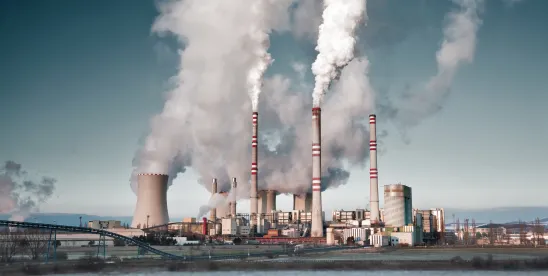On May 8, 2024, a large group of Democrat members of the Pennsylvania House of Representatives introduced H.B. 2275, the Pennsylvania Climate Emissions Reduction Act, into the General Assembly. The Shapiro administration announced PACER earlier this year as an approach to creating a Pennsylvania-specific carbon reduction program instead of joining the Regional Greenhouse Gas Initiative. The actual language of the bill unsurprisingly retains key aspects of the RGGI regulation that the Environmental Quality Board promulgated on April 23, 2022. The Commonwealth Court declared that regulation void on November 1, 2023 as being an unconstitutional tax and enjoined the Pennsylvania Department of Environmental Protection from enforcing it. However, the Court’s decision does not remove the regulation from existence.
As proposed, PACER directs DEP, within 120 days of enactment, to review the base CO₂ allowance budget of 78 million tons that DEP established in the RGGI regulation in 2022 (which declines to 58 million tons in 2030) and recommend revisions to that budget, if necessary, after considering the effect of a new base budget on jobs, consumers, and the environment. DEP is not given specific authority to consider how a revised CO₂ budget would affect the reliability of the PJM grid or the potential for emission leakage outside Pennsylvania.[1] These were two of the biggest industry objections to the RGGI regulation during its development.
After DEP develops a revised CO₂ budget, the EQB would promulgate a final base budget by adopting a final-omitted regulation (a procedure that removes otherwise applicable public notice and comment opportunities), after which DEP would conduct a Pennsylvania-run auction of CO₂ allowances using the procedure already established by the RGGI regulation.
The same “budget sources” (i.e., CO₂ emission sources) that were subject to RGGI in 2022 – i.e., fossil fuel-fired electricity generators (i.e., coal, natural gas, and waste coal generation stations) with a nameplate capacity of 25 MW or more – would be subject to PACER and must buy allowances equal to the tons of CO₂ emitted annually. The critical issue will be how many CO₂ allowances are established in a revised base budget. Even if a new base budget starts with the 78 million tons allocated in 2022, the cost imposed on generation – or, the revenue provided through PACER, depending on one’s perspective – could be significantly higher than the approximately $350 million projected in 2022 based on the multi-state RGGI trading price for allowances ($5.20/allowance in the 2019 baseline year compared to $16.00/allowance in 2024). The costs could be higher if a revised baseline budget has fewer allowances and/or declines more rapidly. Although PACER would preserve the waste coal set-aside and the combined heat and power allowance from the RGGI regulation, its total costs would fall most heavily on natural gas generation because gas now makes up significantly more generation than coal.
PACER would give DEP specific authority to enforce compliance with the carbon budget. That means, among other things, affected budget sources must apply for a permit to incorporate the CO₂ trading program and begin accumulating allowances based on three-year control periods.
Finally, PACER would specifically direct revenue from CO₂ allowance auctions into alternative energy and clean energy programs, which DEP’s 2022 RGGI regulation did not do. For example, grants may be awarded from a newly created Pennsylvania Energy Transformation Account and a new Workforce Enhancement Fund for carbon capture utilization and storage, clean hydrogen production, fuel switching, and renewable energy including solar, wind, battery storage, and geothermal projects. Thus, PACER would establish a carbon cap-and-trade program to reduce fossil fuel-fired electricity generation and direct a substantial portion of the revenue generated from the sale of CO₂ allowances to the development of alternative energy sources. The bill is currently before the House Committee on Consumer Protection, Technology and Utilities. No timeline for further consideration has been announced.




 />i
/>i

